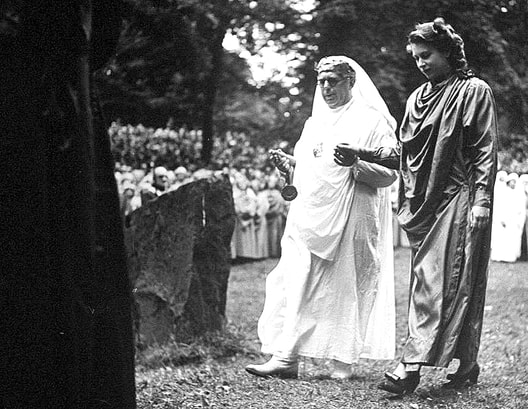Hopepunks and Mistletoe
Definition: hopepunk, new word 2017, noun, used to describe a literary and artistic movement that celebrates the pursuit of positive aims in the face of adversity
On 24 August 1977, the Sex Pistols played at the Penthouse nightclub on St Nicholas Street in Scarborough. A year earlier, they played Manchester’s Lesser Free Trade Hall, a gig that radio presenter Tony Wilson described as one of the most important of the 20th century.
The band had been banned from playing almost everywhere after their notorious appearance on Bill Grundy’s Today show left the nation aghast with their liberal use of swear words. Their notoriety forced them to perform a string of under-cover gigs under the banner SPOTS (Sex Pistols on Tour Secretly) while the nation calmed down. They gigged using code names like Acne Rabble, the Tax Exiles and Mystery Band of International Repute. At the Penthouse, they were the Special Guests.
The Penthouse, don’t forget, was on the same street midway between the old Scarborough Bank and the Long Rooms; the ancient place of Scarborough governance for the town’s old corporation. The Penthouse was a pertinent venue for a band who wrote songs about anarchy and wobbery.
The artwork on posters and album sleeves became iconic and is archived in the Victoria & Albert and British museums. Artist Jamie Reid designed all the Sex Pistols imagery. He had been at art college with Malcolm McLaren, who became the band’s manager. What I find most interesting about Reid and his punk portrait of the Queen with a safety pin through her nose is his Uncle George.
George Watson MacGregor Reid is shrouded in mystery. Born in the late 19th century, he was a social reformer and leader of the Labour Party branch in Clapham. An enigmatic figure who not only had a profound effect on the British establishment but also on ordinary people, who walked in their hundreds across Salisbury Plain to hear his magnificent rantings among the stones of Stonehenge. He was the founding father of the modern druid movement.
Uncle George criticised modern religions which he felt divided people. He asserted that his brand of druidism welcomed all religions and all faiths. He promoted the need for humanity to embrace altruism, pacifism and temperance, while condemning militarism and profiteering, mixing Egyptian, Buddhist, Shinto, Confucian, Christian and Islamic principles. He was regarded as a crank or quack for stating that being healthy both physically and mentally was every person’s birthright, and politics should have a sound moral basis or it should not be regarded as politics. His sect, the Great Universal Bond was, he asserted, an ancient society that he had rekindled. Past members included the Leveller John Lilburne, the Digger Gerrard Winstanley, John Aubrey, Charles Dickens, William Morris and Dante Rossetti as well as many other social and religious radicals.
Reid’s fascination with the druids progressed naturally into a need for exclusive groups and societies. Mysticism and the occult had been a popular diversion of the Victorian upper classes, which continued well into the 20th century. Druidism was in vogue and embraced with gusto. Winston Churchill was initiated into the Albion lodge (Albion being the ancient name of Britain) of the Ancient Order of Druids in 1908 at a gathering where everyone else wore white robes, mistletoe and false beards. Elizabeth II was initiated as an ovate member of the Order of Bards, Ovates and Druids in 1946, before she became queen. By the outbreak of the first world war, the United Order of Druids in the UK had 50,000 members. The biggest lodge was in Scarborough and big meetings were held at the pseudo classical temple of Westborough Methodist Church.
I love the dichotomy of the druids, who are epitomised as an anti-establishment counter culture as well as an esoteric culture of exclusivity, championed by the establishment. The images of the future queen being ordained as an ovate next to Jamie Reid’s punk portrayal of her with a safety pin through her nose illustrates this contrast perfectly.
There is little evidence to prove the druids originally had anything to do with Stonehenge or indeed any stone circle, according to British archaeologists. The Ancient Order of Druids claim otherwise. The writer John Michel said Stonehenge reflected the soul of the nation: “No proof has ever been discovered, but even if druids have no relevance to anything that happened in the past they are certainly true of its future. For Stonehenge is now the acknowledged battleground of archaeology, where scholarly reputations are sacrificed and where every new theory massacres the theories of its predecessors”.
DavwhiteArt






